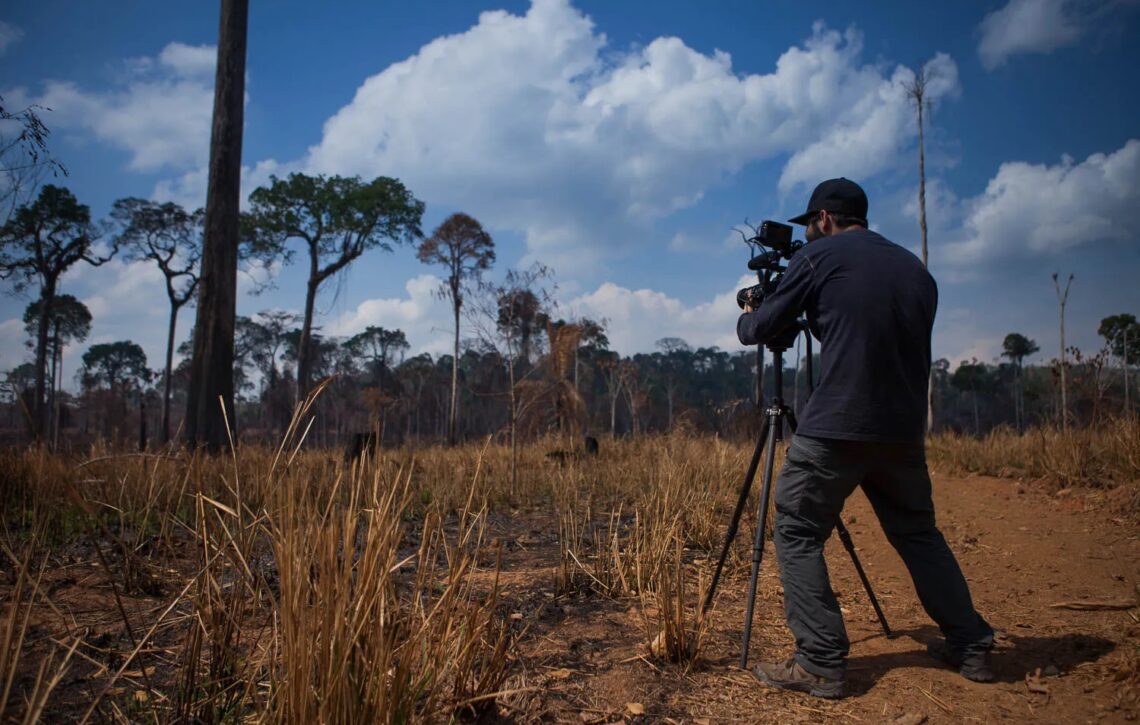Introduction
As climate change accelerates, its impact is no longer limited to rising sea levels or global temperatures. One of the most immediate and devastating effects is the displacement of people from their homes, giving rise to a new category of migrants: climate refugees. In the United States, a growing number of journalists are taking on the critical task of telling these refugees’ stories—bringing human faces to what is often discussed in abstract terms.
Through investigative reporting, multimedia storytelling, and grassroots coverage, U.S. journalists are shedding light on the personal struggles, policy failures, and environmental devastation that drive people to leave their homes. This article explores how American journalists are covering climate displacement, the challenges they face, and why their work is more vital than ever.
The Emergence of Climate Refugees in the U.S.
While the term “refugee” traditionally refers to those fleeing war or persecution, the definition is expanding. Climate refugees are people who are forced to leave their homes due to environmental disruptions such as hurricanes, floods, wildfires, droughts, or sea-level rise. In the U.S., this phenomenon has been particularly noticeable in places like Louisiana, Alaska, and California.
Journalists have documented entire communities—like Isle de Jean Charles in Louisiana—who have had to relocate due to rising waters. Similarly, wildfires in California and Colorado have displaced thousands, with some communities never fully recovering. In Alaska, melting permafrost has forced Native Alaskan villages to relocate entirely. These stories are now being chronicled by local and national media, revealing not only environmental decay but also cultural loss and political inertia.
How Journalists Are Covering Climate Refugees
1. Storytelling Through Human Faces
The most compelling coverage often focuses on personal narratives. Journalists like Elizabeth Rush, author of Rising: Dispatches from the New American Shore, have used immersive journalism to tell the stories of people directly impacted by climate change. Her work combines field reporting with emotional storytelling, giving voice to those who are usually marginalized in policy debates.
Major outlets such as The New York Times, NPR, and ProPublica have produced in-depth features following families displaced by hurricanes in Puerto Rico, floods in the Midwest, and fires in the West. These stories serve not just as documentation, but as calls to action—pushing audiences to consider how climate change affects people on an individual level.
2. Multimedia and Investigative Reporting
The rise of digital media has allowed journalists to use video, audio, and interactive graphics to make the stories of climate refugees more accessible and emotionally resonant. A striking example is The Guardian’s visual series showing how climate change is redrawing coastlines across the U.S. and forcing evacuations.
Investigative journalists have also tracked where federal funding is falling short. For instance, investigations into FEMA’s disaster response have exposed inequities in how aid is distributed—often favoring wealthier, white communities over poorer, Black or Indigenous populations. By exposing these systemic failures, journalists hold institutions accountable while providing context to displacement.
3. Local Journalism’s Crucial Role
Local journalists are often the first to cover the immediate aftermath of climate disasters. Outlets in places like Louisiana, Mississippi, and Florida have reported on everything from flooded neighborhoods to forced evacuations and long-term displacement.
Because local reporters are embedded in their communities, they are uniquely positioned to understand and convey the social and cultural stakes of climate-induced migration. Their coverage is also essential in informing local policy debates and helping communities prepare for future challenges.
Challenges Journalists Face
1. Access and Safety
Covering climate disasters often means entering dangerous zones—burning forests, flooded towns, or collapsed neighborhoods. Journalists risk their own safety to bring stories to the public. In many cases, they must act quickly before the scene changes or evidence disappears.
2. Emotional Toll
Telling the stories of people who have lost everything can be emotionally taxing. Journalists frequently report on grief, trauma, and injustice. Ethical storytelling becomes paramount—ensuring subjects are treated with dignity and not exploited for sensationalism.
3. Political Polarization
In the U.S., climate change remains a politically divisive issue. Journalists who report on climate refugees may face backlash from climate change skeptics or political groups who deny the urgency of the problem. This polarization can affect funding for climate journalism and undermine public trust in objective reporting.
Climate Refugees in U.S. Policy: What Journalists Are Exposing
One of the most critical areas journalists are investigating is the gap in legal recognition for climate refugees. The U.S. does not currently have a legal category for people displaced by environmental factors, whether domestic or international. This policy vacuum leaves many without access to aid, housing, or legal protections.
Journalists have highlighted how this gap disproportionately affects vulnerable populations—particularly low-income families, Indigenous communities, and communities of color. For example, reporting from Alaska has shown how Indigenous groups lack resources to move entire villages, despite clear evidence that rising waters are destroying their homes.
Similarly, after Hurricane Maria, many Puerto Ricans relocated to the mainland U.S. in search of stability, only to find inadequate support systems. Investigative reporters have traced how bureaucratic red tape and inconsistent aid delayed recovery, pushing thousands into long-term displacement.
Spotlight on International Coverage by U.S. Journalists
U.S. journalists are also reporting on climate displacement abroad, drawing connections to domestic challenges. From Bangladesh to the Pacific Islands to Central America, climate change is driving mass migrations. American journalists have produced documentaries, podcasts, and articles linking these migrations to U.S. immigration policy.
For instance, reporters covering the U.S.–Mexico border have interviewed migrants from Guatemala and Honduras who cite crop failures and natural disasters—exacerbated by climate change—as primary reasons for their departure. By tracing these patterns, journalists show how climate migration is not just a humanitarian issue but a geopolitical one.
The Future of Climate Refugee Journalism
1. Collaborative Journalism
There is a growing trend toward collaboration across newsrooms, nonprofits, and even climate scientists. Projects like Covering Climate Now, a global journalism initiative, unite hundreds of media outlets to improve and expand climate coverage. These partnerships amplify voices and provide consistent coverage of climate displacement across platforms.
2. Solutions Journalism
Beyond documenting suffering, many journalists are embracing “solutions journalism”—stories that explore how communities are adapting. From building flood-resistant homes in Miami to managed retreat policies in New Jersey, these stories offer hope and actionable models for resilience.
3. Training the Next Generation
With climate reporting becoming a core journalistic beat, universities and training programs are preparing future journalists to report on these complex issues. Institutions like Columbia Journalism School and UC Berkeley are offering specialized training in climate reporting, ensuring a pipeline of informed, ethical journalists.
Case Studies: Powerful Examples of Climate Refugee Reporting
1. Isle de Jean Charles, Louisiana
Often cited as the first official “climate refugees” in the U.S., the residents of Isle de Jean Charles are a Native American tribe who have watched their land disappear due to rising sea levels. Journalists have followed their relocation process, funded by a $48 million federal grant. Coverage has illuminated cultural loss, logistical challenges, and the bureaucratic process of moving an entire community.
2. Paradise, California
The 2018 Camp Fire destroyed the town of Paradise, leaving tens of thousands homeless. Journalists have chronicled the long road to recovery, including stories of mental health challenges, insurance disputes, and migration to neighboring towns ill-equipped for the population surge.
3. Fairbanks and Shishmaref, Alaska
Melting permafrost and coastal erosion are forcing Native communities in Alaska to move. U.S. journalists have traveled to these remote locations to report on how climate change is uprooting centuries-old cultures. Their work has helped bring federal attention and limited funding to these communities.










